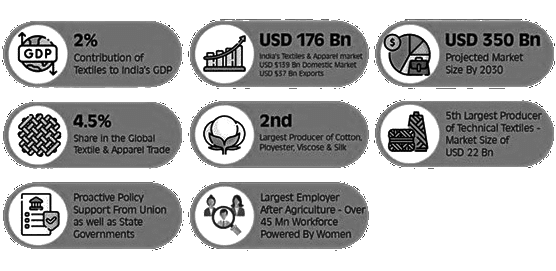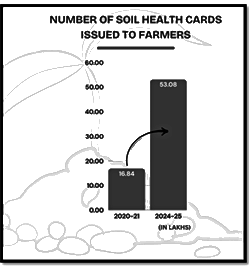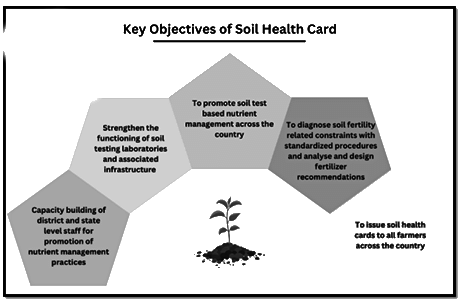PIB Summary- 19th February, 2025 | PIB (Press Information Bureau) Summary - UPSC PDF Download
PM applauds inauguration of Inland Waterways Terminal at Jogighopa, Assam
Context
The Inland Waterways Transport (IWT) Terminal at Jogighopa, Assam, was inaugurated to enhance regional connectivity, facilitate trade with Bhutan and Bangladesh, and boost logistics in the North East.
- Inauguration of IWT Terminal : The Inland Waterways Transport (IWT) Terminal on the Brahmaputra (National Waterway-2) at Jogighopa, Assam, was inaugurated.
- Key Dignitaries: Union Minister Sarbananda Sonowal and Bhutan’s Finance Minister, Lyonpo Namgyal Dorji, jointly inaugurated the terminal.
- Strategic Importance: The terminal is linked to the Multi-Modal Logistics Park, making it a crucial hub for international trade with Bhutan and Bangladesh.
- Enhanced Logistics: The project aims to improve cargo movement and boost connectivity in Assam and the North East.
- PM Modi’s Endorsement: Prime Minister Narendra Modi praised the initiative, emphasizing its role in infrastructure development and inland waterway expansion.
About Jogighopa Inland Waterways Terminal (IWT)
Inauguration & Flag-off:
- Inaugurated on February 18, 2025, by Union Minister Sarbananda Sonowal.
- Two ships (MV Padma Navigation-II, MV Trishul) and two barges (Ajay, Dikshu) set sail for Bangladesh carrying 110 metric tonnes of coal and stone chips.
Connectivity & Trade Routes:
- Declared as a Port of Call under the Protocol on Inland Water Transit and Trade (PIWTT) between India & Bangladesh.
- Part of the Bharatmala Programme economic corridor, connecting Dalu-Tura-Goalpara-Gelephu.
Distances from key locations:
- 108 km from Bangladesh border.147 km from Guwahati via IWT.91 km from Gelephu, Bhutan, where a modern city is being developed.
- This terminal is expected to significantly enhance trade and transportation efficiency, further integrating the Northeast with the larger economic networks of India and neighboring countries.
Bharat Tex 2025
Overview & Significance
- India’s largest global textile event held from 14-17 February 2025 at BharatMandapam, New Delhi.
- Covered 2.2 million sq. ft., hosted 5,000+ exhibitors, and attracted 1,20,000+ trade visitors from 120+ countries.
- Focused on the “Farm to Fibre, Fabric, Fashion, and Foreign Markets” vision to enhance the entire textile value chain.
- Showcased India’s global textile leadership through innovation, sustainability, and global collaboration.

Economic Impact & Industry Snapshot
- India is the 6th-largest global textile exporter, contributing 8.21% of India’s total exports (2023-24).
- Textiles account for a 4.5% share in global trade; US & EU consume 47% of India’s textile exports.
- Employment driver:
- Direct jobs: Over 45 million people
- Indirect livelihoods: Over 100 million people, including a high proportion of women and rural workers.
- Textile exports at ₹3 lakh crore aim to triple to ₹9 lakh crore by 2030.
Government Policy Support & Schemes
- Prime Minister Mega Integrated Textile Region and Apparel (PMMITRA) Parks:
- 7 mega parks with USD 10 Bn investment, ensuring plug-and-play infrastructure and integrated textile ecosystems.
- Production Linked Incentive (PLI) Scheme:
- INR 10,683 crore (~USD 1 Bn) incentives for MMF Apparel, MMF Fabrics, and Technical Textiles manufacturing.
- Samarth Scheme:
- Skill development across textile value chain, demand-driven with state-specific programs.
- National Technical Education & Training Mission:
- Targets USD 300 Bn in technical textiles by 2047, focusing on R&D, market development, and skilling.
- State Incentives:
- States offering capital subsidies, wage support, power, and water incentives to boost textile units.
Innovations & Focused Business Zones
- Intelligent Manufacturing:
- Integration of AI, IoT, automation, and data analytics to modernize textile production.
- Technical Textiles:
- Application in automotive, aerospace, healthcare, and construction sectors.
- Home Textiles:
- Prominence of regional craftsmanship from Gujarat (embroidery) and Kashmir (woollen shawls, rugs).
- Fabrics & Apparel:
- Major production hubs: Gujarat, Tamil Nadu, Punjab, West Bengal.
- Fusion of traditional handlooms with modern manufacturing for domestic and global markets.
- Handloom & Handicrafts:
- Highlighted at Indie Haat (Feb 12-18) with 85 artisans showcasing 80+ handcrafted products.
- Fashion Showcase:
- “Breathing Threads” Fashion Show emphasized zero-waste strategies and sustainable handloom designs.
Skilling, Startups & Research Initiatives
- 4 Start-ups under the GREAT Scheme received INR 50 lakh each for innovations in medical, industrial, and protective textiles.
- 3 Institutes (IIT Indore, NIT Patna) granted INR 6.5 crores for specialized textile courses.
- 12 Skill Development Courses approved in medical, protective, mobile, and agricultural textiles.
Sustainability & Global Partnerships
- Strong emphasis on eco-friendly production, zero-waste designs, and ethical manufacturing.
- International collaborations with global CEOs, policymakers, and manufacturers fostered cross-border trade partnerships.
- Reinforced India’s commitment to “Fashion for Environment and Empowerment”, aligning with global sustainability trends.
Comparison with Bharat Tex 2024
- Bharat Tex 2024:
- 3,500+ exhibitors, 3,000+ overseas buyers, and 1,00,000+ visitors.
- Hosted 50+ knowledge sessions on trade and innovation.
- Bharat Tex 2025:
- Scaled up to 5,000+ exhibitors and 1,20,000+ visitors, signifying enhanced global interest.
- Expanded focus on technical textiles, sustainability, and intelligent manufacturing.
Key Takeaways & Future Outlook
- Bharat Tex 2025 positions India as a global textile hub through:
- Policy-driven growth (PLI, PM MITRA, Samarth).
- Innovation and technology integration.
- Sustainability and ethical production.
- Export diversification targeting₹9 lakh crore by 2030.
- Strengthens rural employment, women’s participation, and artisan empowerment.
- Reinforces India’s leadership in fashion, fabrics, and future-oriented textile innovations.
Celebrating a Decade of Soil Health Cards
Introduction
- Launched by Prime Minister Narendra Modi on 19th February 2015 at Suratgarh, Rajasthan.
- Aimed at assisting State Governments to issue Soil Health Cards (SHCs) to all farmers.
- SHCs provide information on soil nutrient status and recommend appropriate nutrient dosage to enhance soil fertility and crop productivity.
- SHC Portal (www.soilhealth.dac.gov.in) enables generation of cards in major languages and 5 dialects with a uniform format.
Key Features of the SHC Scheme
- SHC reports soil status for 12 parameters:
- Macronutrients: Nitrogen (N), Phosphorus (P), Potassium (K), Sulphur (S)
- Micronutrients: Zinc (Zn), Iron (Fe), Copper (Cu), Manganese (Mn), Boron (Bo)
- Other Parameters: pH (acidity/basicity), EC (Electrical Conductivity), OC (Organic Carbon)
- Provides fertilizer recommendations and soil amendment guidelines.
- Soil samples collected twice annually – post-Rabi and post-Kharif seasons.

Village Level Soil Testing Labs (VLSTLs)
- Guidelines issued: June 2023.
- Eligibility:
- Youth aged 18-27 years
- Community-based entities: SHGs, FPOs, Schools, Agriculture Universities
- Status (as of Feb 2025):
- 665 VLSTLs established across 17 States.
- Benefits:
- Promotes local entrepreneurship and rural employment.
- Enhances timely soil testing and localized solutions for farmers.
School Soil Health Programme
- Pilot launched with DA&FW, DSE&L, ICAR in rural Kendriya Vidyalayas & Navodaya Vidyalayas.
- Objective: Promote soil health awareness and sustainable farming among students.
- Activities:
- Students collected and tested soil samples.
- Generated SHCs for local farmers.
- Conducted farmer awareness drives on judicious fertilizer use.
- Impact (as of 2024):
- 1020 schools implementing the programme.
- 1000 soil labs established; 125,972 students enrolled.

Technological Advancements
Revamped SHC Portal (2023):
- Integrated with Geographic Information System (GIS).
- Captures test results on interactive maps showing boundaries at multiple administrative levels.
SHC Mobile App Features:
- Auto-selection of latitude and longitude for soil samples.
- Restricts sample collection to designated areas for accuracy.
- Generates QR codes for sample-to-result tracking, ensuring transparency.
- Real-time monitoring and digital card generation through the app.
Digitization Efforts:
- Developed by National Informatics Centre (NIC).
- Facilitates web–based workflow and efficient data management.
Integration with Rashtriya Krishi Vikas Yojana (RKVY)
- Merged in 2022–23 under the ‘Soil Health & Fertility’ component.
- Ensures holistic agricultural development with enhanced resource allocation.
Impact & Achievements
- Improved awareness of soil nutrient management among farmers.
- Promoted balanced fertilizer use, reducing over-dependence on chemical fertilizers.
- Enhanced crop productivity and ensured cost–effective farming.
- Youth and student involvement fostered community participation and awareness.
Challenges & Way Forward
Challenges:
- Ensuring timely delivery of SHCs to all farmers.
- Bridging gaps in digital literacy among rural farmers.
- Sustaining accurate sample collection and regular testing.
Way Forward:
- Expand VLSTLs and incentivize youth participation.
- Strengthen digital outreach and training for farmers.
- Incorporate AI & remote sensing for precise soil monitoring.
Conclusion
- Over the past decade, the SHC Scheme has transformed farming practices by providing scientific soil health insights.
- Technological upgrades and educational initiatives have made the scheme more accessible and farmer-friendly.
- The scheme remains crucial in ensuring sustainable agriculture and preserving soil health for future generations.
















